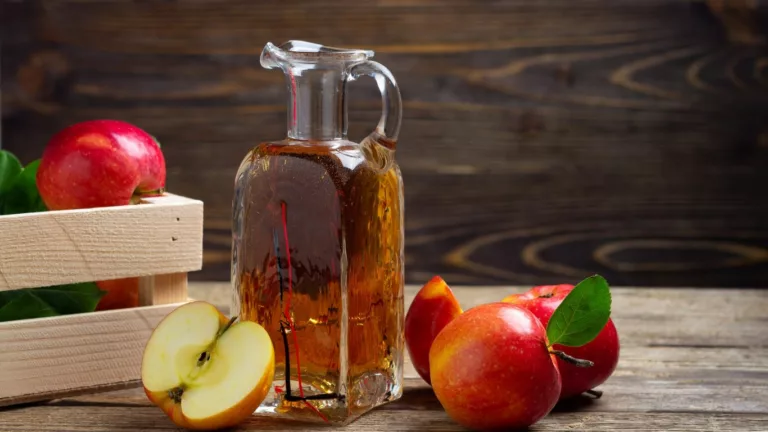Delicious GERD Friendly Salad Topping Ideas for Symptom Relief
Back when I first started managing my GERD, I thought salads were a safe zone—light, fresh, healthy. But oh no, one wrong topping and bam—hello, chest burn and that awful lump-in-the-throat feeling. If you’re like me and you’ve been burned (literally) by “healthy” choices, you’re not alone. It turns out, a lot of popular salad toppings can actually make GERD symptoms worse. So, let’s talk about what you can add to your salads without triggering reflux—and still keep things delicious.
Why Salad Toppings Matter More Than You Think

Salads can be one of the best meals for managing GERD—light, customizable, and packed with nutrients. But the wrong toppings? They can undo all that goodness in one bite. I’ve learned this the hard way. Spicy croutons, raw onions, even certain dressings turned my “safe meal” into a reflux nightmare.
The key is understanding which ingredients are gentle on the digestive tract and which are common triggers. According to Mayo Clinic, fatty, acidic, and spicy foods are among the top culprits for reflux flare-ups. So, when it comes to toppings, it’s not just about flavor—it’s about balance and symptom relief.
GERD-Friendly Salad Toppings You’ll Actually Want to Eat

1. Lean Protein Picks
Protein is a great anchor for any salad, but fatty or fried versions are a big no for GERD. Stick with:
- Grilled chicken breast – Skinless and lightly seasoned, it’s satisfying without the reflux risk.
- Turkey breast – Especially great if it’s not heavily processed or salted.
- Boiled or poached eggs – Contrary to what I assumed, hard-boiled eggs (especially whites) are usually GERD-safe for most folks. Avoid frying them though.
More on this in our GERD-safe protein guide.
2. Low-Acid Veggie Boosters
Crunch, color, and fiber—veggies are the MVPs of salad. But steer clear of high-acid or spicy options like raw tomatoes and jalapeños. Instead, try:
- Cucumber slices – Crisp and soothing.
- Steamed or roasted carrots – Gentle and naturally sweet.
- Avocado (in moderation) – Creamy and packed with healthy fats, though high in fat, small portions work well for many.
- Grated zucchini or squash – Mild and easy on the gut.
See how low-acid veggies can actually support digestive health rather than stir it up.
3. Gut-Friendly Carbs
If you like your salads more filling, carbs are key. Just choose wisely. I go for:
- Brown rice – It’s gentle, wholesome, and adds texture.
- Quinoa – A complete protein and surprisingly GERD-friendly (bonus points if it’s cold).
- Oats or oat-based croutons – Yup, you read that right. I sometimes sprinkle a bit of unsweetened baked oatmeal for crunch. Weird? Maybe. Delicious? Absolutely.
More on that in this oat-based reflux solution article.
Ditch These Common Toppings If You Want Relief

Now let’s talk about the enemy. These may taste great, but they’ve ruined too many dinners for me to recommend them:
- Raw onions and garlic – Even a tiny slice sets off my reflux. Cooked might be okay for some, but I play it safe.
- Tomatoes and salsa – Acidic and almost always a trigger.
- Citrus-based dressings – Lemon vinaigrettes sound refreshing… until you’re waking up at 2 a.m. with heartburn.
- Cheese (certain types) – Especially full-fat, aged cheeses like parmesan and blue cheese. I swap them for small amounts of low-fat mozzarella instead.
- Croutons with garlic or spice – They seem harmless, but I’ve had my worst flare-ups after “just a few.”
If you’re still unsure what’s setting you off, this guide on surprising GERD triggers might help you connect the dots.
Better Dressings: Skip the Burn, Not the Flavor

Let’s be honest—bland salads are depressing. But you don’t need acidic dressings to make them pop. My go-to options:
- Olive oil + herbs – Simple, anti-inflammatory, and versatile. I add dill, basil, or oregano for flavor without fire.
- Plain Greek yogurt + cucumber – Think creamy tzatziki vibes without the lemon juice.
- Almond butter drizzle – Mixed with a bit of water and maple syrup for a sweet-nutty twist (small amounts only).
You can check out our full GERD-safe dressing guide for more ideas like these.
And if you need a structured plan to reset your meals, I really recommend the GERD-friendly diet plan. It’s helped me more than any prescription bottle ever did.
Sweet But Safe: GERD-Friendly Fruit Toppings

Now here’s where it gets interesting. I used to avoid all fruits assuming they were acidic troublemakers. Turns out, that’s only partly true. Some fruits are surprisingly reflux-safe—especially when paired with other soothing ingredients.
My go-to gentle fruits:
- Banana slices – Naturally low-acid and creamy, they’re a sweet way to mellow out sharp greens like arugula.
- Melon cubes – Cantaloupe and honeydew are both cooling and digestion-friendly.
- Pear or apple (peeled and thinly sliced) – Just avoid super tart varieties. I like Bartlett pears or Fuji apples best.
- Blueberries (in moderation) – Not too acidic, and their antioxidants are a nice bonus.
Want more ideas? We covered a bunch of low-acid fruits for GERD you might be overlooking.
Crunch Without the Burn: Better Texture Ideas

Salads without crunch just feel… incomplete. But that doesn’t mean you need spicy croutons or roasted nuts. I’ve tried a bunch of alternatives, and here’s what works:
- Pumpkin seeds (raw or dry-roasted, unsalted) – Easy to digest and packed with magnesium, which can actually support digestive health.
- Toasted oats – These are underrated. I lightly toast rolled oats in a pan with a drizzle of olive oil for a subtle crunch.
- Rice puffs or millet puffs – They’re light, airy, and won’t weigh your stomach down.
If nuts are a trigger for you, definitely check out this breakdown on GERD and nuts—some can be tolerated in moderation, others not so much.
Plant-Based Protein Toppers That Won’t Stir Things Up

Whether you’re vegan, vegetarian, or just trying to cut back on meat, plant-based toppings can be tricky when it comes to GERD. For example, chickpeas in large amounts are a no-go for me, but small, well-cooked portions are usually fine.
GERD-friendly protein boosters I use often:
- Soft tofu cubes – Silken or soft tofu adds protein and creaminess without heaviness.
- White beans (like cannellini) – Rinse them well and mash them slightly to avoid any gassy surprises.
- Lentils (well-cooked) – Red lentils are my favorite; they’re softer and easier to digest.
We dive deeper into high-protein GERD-safe options here—definitely worth a read if you’re looking to shake things up nutritionally.
Flavor Hacks: Herbs, Spices & Add-Ons That Are Actually Safe

I used to be scared of herbs—thinking anything “flavorful” meant “trigger.” But I’ve found so many herbs and gentle spices that make a salad pop without the pain. Here are my staples:
- Fresh basil – Mild, aromatic, and perfect with fruit-based salads.
- Dill and parsley – Both add brightness without acidity.
- Turmeric (pinch) – Anti-inflammatory and surprisingly mellow when mixed with yogurt-based dressings.
- Ground coriander – Great nutty note without any acid.
Need more options? Our complete list of safe spices for acid reflux is full of flavor-packed ideas.
GERD-Friendly Topping Combos I Swear By

If you’re wondering how to pull all this together into a tasty, satisfying salad, I’ve got you. These are some of my go-to combinations that work for both flavor and comfort:
Combo 1: The Sweet Crunch
- Base: Baby spinach + chopped cucumber
- Toppings: Banana slices + pumpkin seeds + plain yogurt dressing
Combo 2: Creamy Comfort
- Base: Butter lettuce + grated carrot
- Toppings: Boiled egg + avocado + olive oil with parsley
Combo 3: Mediterranean-ish
- Base: Romaine + roasted zucchini slices
- Toppings: Cannellini beans + tofu + dill-yogurt drizzle
Mix and match from these or create your own—just remember to keep the balance of low-acid, low-fat, and high-nutrient in mind.
To understand the science and strategy behind how diet impacts GERD overall, you might want to read our complete GERD diet plan article—it’s grounded in medical guidance and real-life application, just like this one.
Meal Prep Tips for GERD-Friendly Salad Toppings

Look, I’m not always the most organized person in the kitchen—especially when acid reflux is flaring. But one of the best habits I’ve picked up is prepping my salad toppings in batches. Not only does it save time, but it also keeps me from reaching for reflux-unfriendly shortcuts when I’m starving.
How I keep it simple and reflux-safe:
- Batch cook proteins – I grill a few skinless chicken breasts or boil eggs ahead of time, then slice and store them in glass containers.
- Wash and chop low-acid veggies – Cucumber, lettuce, carrots, and squash go straight into airtight bags (dry them well first).
- Whip up 1–2 dressings – I keep a small jar of yogurt-based dressing and another of olive oil + herbs in the fridge.
- Portion fruits or toppings – Sliced pears or a handful of blueberries stay in small jars for quick assembly.
This has helped me maintain a reflux-friendly diet even on the busiest days. If you’re looking for inspiration, check out our full guide on GERD-friendly meal prep that actually works.
Smart Swaps That Changed My Salad Game

It took me a while to figure out that GERD isn’t about restricting everything—it’s about replacing the right things. Once I stopped trying to “tough it out” with ingredients I knew were risky, my digestion and energy improved big time.
These swaps made a real difference for me:
| Trigger Ingredient | GERD-Safe Alternative |
|---|---|
| Tomatoes | Steamed carrots or roasted red bell peppers |
| Raw onions | Chopped parsley or fennel (raw or lightly cooked) |
| Lemon vinaigrette | Olive oil + apple cider vinegar (diluted) or yogurt base |
| Feta or blue cheese | Low-fat ricotta or soft mozzarella |
| Fried chicken | Grilled or baked skinless chicken breast |
Swapping doesn’t mean sacrificing flavor. If anything, I’ve gotten more creative with my salads because of it—and my gut thanks me every time.
Salads Don’t Have to Be Boring or a Trigger

I used to think salads were something you eat when you’re “trying to be good” or managing reflux out of necessity. But once I figured out the right toppings, it became a meal I actually look forward to. Real talk—no more sad lettuce and tasteless cubes of plain chicken.
You really can build a bowl that’s satisfying, gut-friendly, and flavorful without inviting a reflux episode afterward. Just take it one topping at a time.
And if you’re still not sure whether your symptoms are typical or something more complex, you might want to check out the early warning signs of GERD. I wish I had taken those signals more seriously when mine started—could’ve saved a lot of trial and error.
Final Tips to Keep Salad Enjoyable and Reflux-Free

Before I wrap this up, let me share a few quick rules I live by when it comes to salad and GERD:
- Watch the portion size – Too much of even safe foods can trigger symptoms.
- Eat slowly – Chew well and avoid scarfing down your bowl in five minutes flat.
- Avoid lying down after eating – I used to crash on the couch after dinner. Now I stay upright for at least 30–45 minutes.
- Listen to your body – Everyone’s triggers are slightly different. Track what works and what doesn’t for *you*.
If you’re exploring more than just salad options, I highly recommend this article on natural remedies for GERD. It complements this guide perfectly, especially if you want to take a more holistic approach without sacrificing flavor.

Camellia Wulansari is a dedicated Medical Assistant at a local clinic and a passionate health writer at Healthusias.com. With years of hands-on experience in patient care and a deep interest in preventive medicine, she bridges the gap between clinical knowledge and accessible health information. Camellia specializes in writing about digestive health, chronic conditions like GERD and hypertension, respiratory issues, and autoimmune diseases, aiming to empower readers with practical, easy-to-understand insights. When she’s not assisting patients or writing, you’ll find her enjoying quiet mornings with coffee and a medical journal in hand—or jamming to her favorite metal band, Lamb of God.






